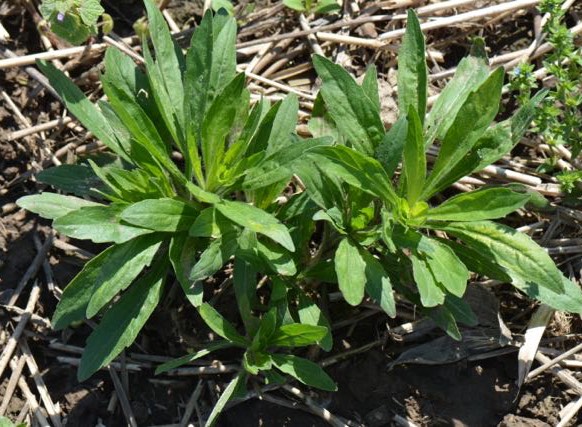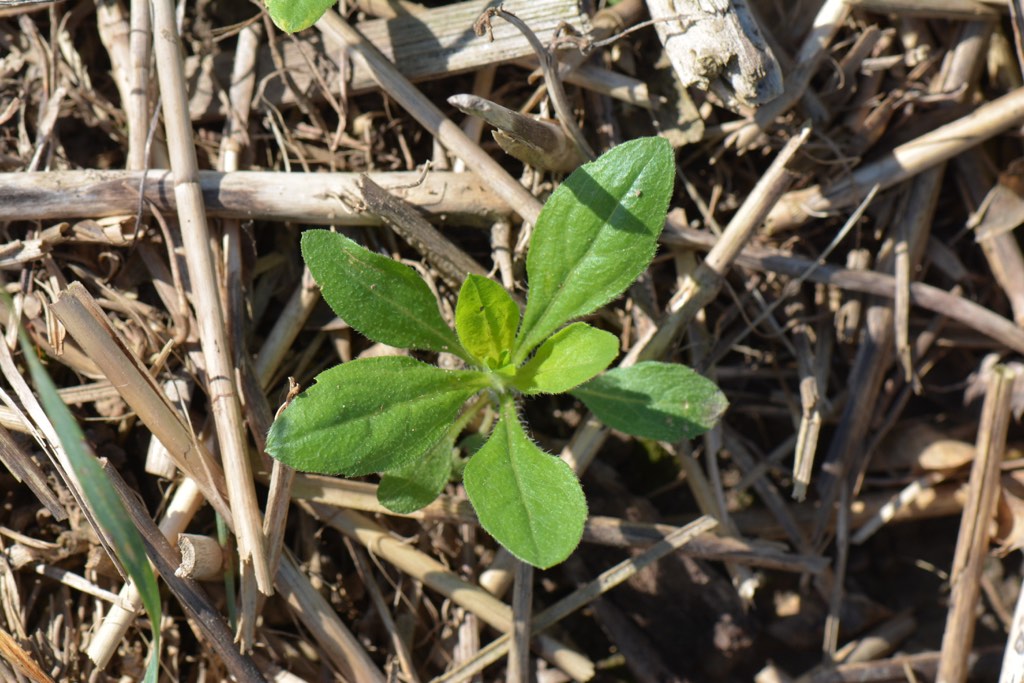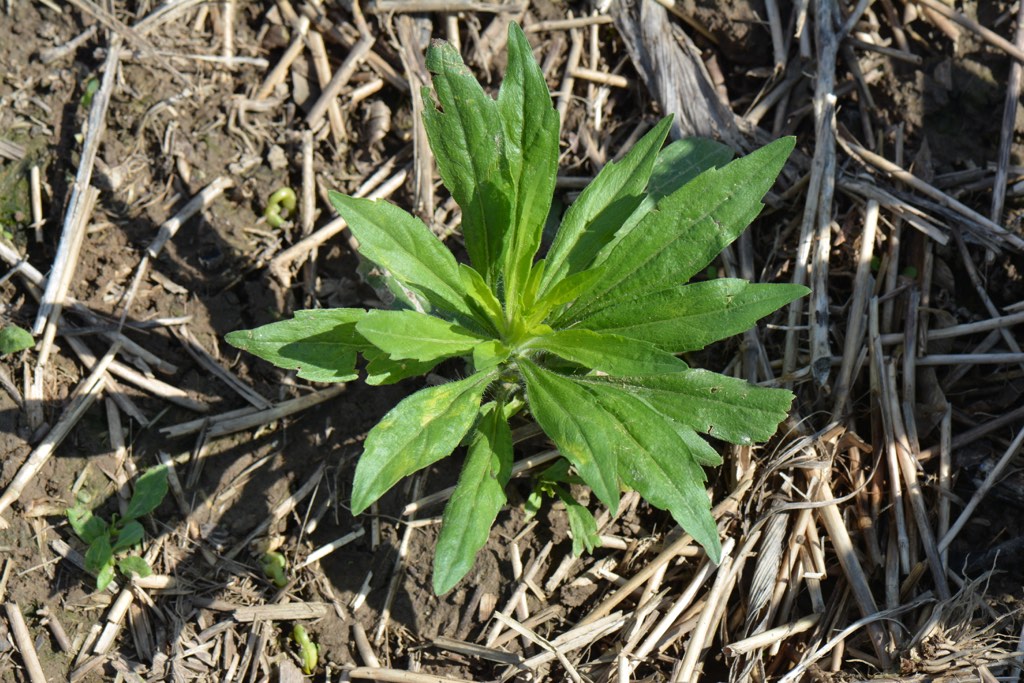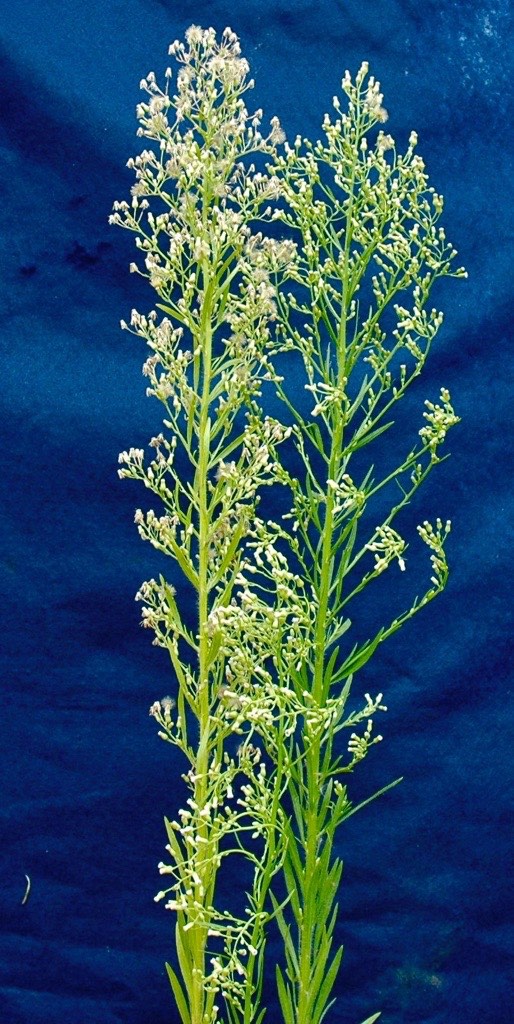Ohio’s Noxious Weeds
Marestail

Conyza Canadensis, marestail
Family: Composite, Asteraceae.
Habitat: Thin turf, agronomic crops, pastures, orchards, fallow fields, waste areas, and roadsides.
Life cycle: Summer or winter annual.
Growth habit: Seedlings develop a basal rosette and mature plants erect are reaching 6 1/2 ft in height.
Leaves: The mature plant has leaves that are entirely without petioles (sessile). Leaves are 4 inches long, 10 mm wide, alternate, linear, entire or more often toothed, crowded along the stem, and hairy. Leaves become progressively smaller up the stem.
Stem: Erect, solid, hairy, reaching 6 1/2 ft in height.
Flower: Many small inconspicuous flower heads occur at the top of the central stem. Individual flowers are 5 mm in diameter with white or slightly pink ray flowers and yellow disk flowers.
Roots: A short taproot with a secondary fibrous root system.
Similar Plants: In the rosette stage of growth, horseweed might resemble other weeds that have this rosette habit, such as Shepherd’s-Purse or Virginia Pepperweed.
The Problem is……………Marestail, also called horseweed, has continuous germination, is highly competitive, fast moving and wide spreading with wind dispersal. Many plants are also Glyphosate tolerant, and some populations have ALS and PPO-inhibitor resistance.




